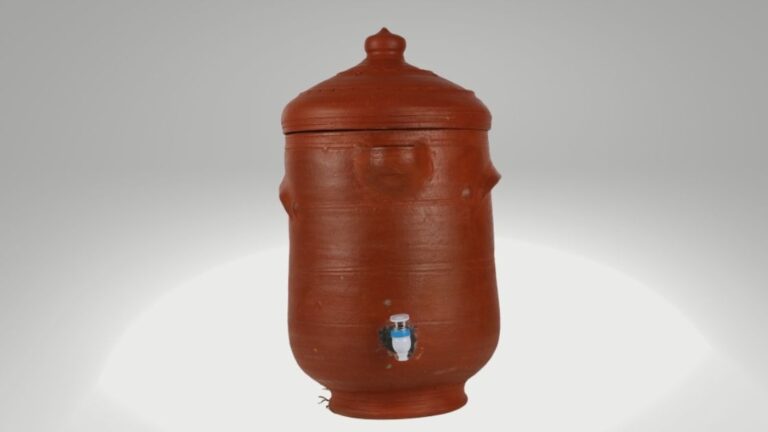Mud Fridge
A “mud fridge” typically refers to a type of cooling device or refrigerator used in rural or off-grid areas, especially in countries with limited access to electricity. This simple cooling system is often made from locally available materials, primarily clay, mud, and water. It operates on the principle of evaporative cooling and is known by various names in different regions, such as “zeer pot,” “clay pot cooler,” or “pot-in-pot refrigerator.” Here’s how a mud fridge works and what it’s used for:
How a Mud Fridge Works:
- Materials: A mud fridge consists of two clay pots, one smaller pot placed inside a larger one. The space between the two pots is filled with wet sand or soil.
- Evaporative Cooling: The inner pot is used to store perishable items like vegetables, fruits, or dairy products. The sand or soil in the space between the pots is kept moist with water. As the water in the sand or soil evaporates, it absorbs heat from the interior of the inner pot.
- Cooling Effect: The evaporative cooling process creates a lower temperature inside the inner pot, keeping the contents cooler than the surrounding environment. This can extend the shelf life of perishable food items.
Benefits and Uses:
- Off-Grid Cooling: Mud fridges are particularly useful in areas where electricity is not readily available. They offer a simple and effective means of keeping food items cool without the need for electrical power.
- Preservation of Perishables: Mud fridges can help rural households and farmers preserve fruits, vegetables, and dairy products for longer periods, reducing food wastage.
- Sustainability: These cooling devices are sustainable and eco-friendly, as they use minimal resources and do not require electricity, making them an excellent option for environmentally conscious individuals and communities.
- Cost-Effective: Mud fridges are inexpensive to construct and maintain, as they are made from locally available materials.
It’s important to note that mud fridges have limitations. They are most effective in arid or dry climates, where the evaporative cooling process is more efficient. In very humid environments, their cooling effect may be less pronounced. Additionally, they are not suitable for freezing or cooling items to very low temperatures, as traditional electric refrigerators can.
Mud fridges are an example of how simple, low-tech solutions can address the cooling needs of communities without access to modern, energy-intensive refrigeration. They are a testament to human ingenuity in adapting to local conditions and making the most of available resources.
ContReent Specific Keywords:#interiordesign#stoneware#porcelain#keramik#contemporaryceramics#handmadeceramics#tableware#ceramique#artist#ceramicartist#handmadepottery#craft#ceramicstudio#Earthenware#MudFridge#MitticoolFridge#EarthenJars#EarthenPlates#EarthenCups#EarthenTawa#EarthenHandi#EarthenFlowerpots#EarthenPots#EarthenFridge#EarthenKadai.


